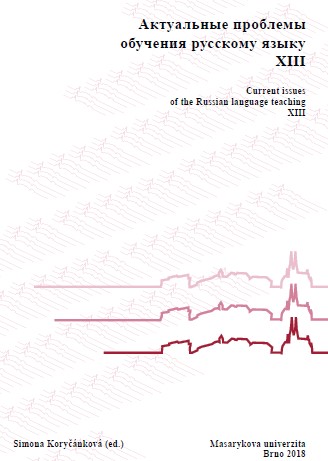ВЫРАЖЕНИЕ СЕМАНТИЧЕСКОГО СУБЪЕКТА В СОВРЕМЕННОМ РУССКОМ И ЧЕШСКОМ ЯЗЫКАХ
EXPRESSION OF THE SEMANTIC SUBJECT IN MODERN RUSSIAN AND CZECH LANGUAGES
Author(s): Oxana Truhlarova
Subject(s): Semantics, Comparative Linguistics, Western Slavic Languages, Eastern Slavic Languages
Published by: Masarykova univerzita nakladatelství
Keywords: subject; grammatical agent; sentence structure; expression plan; content plan; one-part sentences; comparative analysis;
Summary/Abstract: In modern linguistics the category of the subject is primarily connected with the syntactic plan of the language and serves to identify the producer of the action or the carrier of the feature. It should be borne in mind that in the structure of the sentence, depending on the logical and grammatical features, semantic content, communicative prerequisites, we can distinguish a grammatical and semantic subject. At a new level of grammatical abstraction, the grammatical subject is usually the subject, the active producer of the action, which in the sentence is a syntactically independent component. While the semantic subject, which is an agent, though expresses the producer of the action, but in the context of the sentence is opposed to the patient and does not always perform the function of the subject. This discrepancy between the grammatical and semantic subject is due to the asymmetry of semantics and form, since the grammatical subject is the category of the expression plane, and the semantic subject is the category of the content plan. Thus, the category of the subject is represented by a multidimensional syntactic concept integrating different subtypes of the subject, conditioned by a certain asymmetry of meaning and function. The article will focus the attention to the semantic subject and the ways of its implementation in Russian and Czech languages. First of all, we will consider cases of violation of the parallelism of the content plan and the expression plan, that is, those constructions in which the semantic subject and the grammatical subject do not coincide or in which the subject as part of sentence is structurally absent. Examples will be used as an illustrative material from the National Corpus of the Russian language and the Czech National Corpus.
Book: Актуальные проблемы обучения русскому языку XIII
- Page Range: 403-411
- Page Count: 9
- Publication Year: 2018
- Language: Russian
- Content File-PDF

